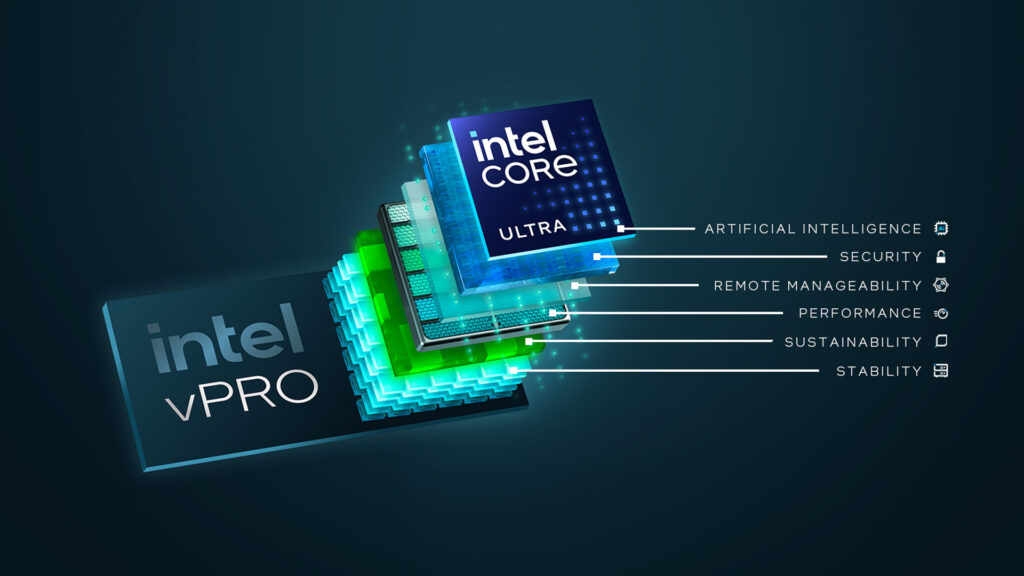New laptop processors feature much improved Intel Arc graphics, which could satisfy 3D requirements of many CAD users
Intel has launched its new vPro platform with Intel Core Ultra laptop processors that will form the foundation for mobile workstations from Dell, HP, Lenovo and others.
For users of CAD and BIM software, the big news is the built-in Intel Arc GPU, which is said to offer up to twice the graphics performance of the previous generation, plus advanced features such as AI and hardware ray tracing.
Mobile workstations from major OEMs will also ship with a new dedicated Intel Arc Pro workstation graphics driver which comes with Independent Software Vendor (ISV) certifications and ‘enhanced performance optimisations’ for creative, design and engineering software.
With the significantly more powerful Intel Arc GPU in the Intel Core Ultra H-Series and a new dedicated Intel Arc Pro workstation graphics driver, the new chip could deliver sufficient performance for 3D CAD, so users do not need to buy a mobile workstation with a discrete GPU
What AEC Magazine thinks
Intel is currently working on certifications for several CAD tools including Autodesk Fusion, Autodesk Inventor, Siemens Solid Edge, Siemens NX, Dassault Systèmes Solidworks, Nemetschek Vectorworks, Bentley MicroStation, PTC Creo and more. Certifications for digital content creation tools, Autodesk Maya and 3ds Max are also in progress.
Intel Core Ultra processors also feature a dedicated AI acceleration capability spread across the central processing unit (CPU), graphics processing unit (GPU) and the new neural processing unit (NPU). In some AI workflows, the GPU still delivers the best performance, but the NPU is more power efficient. According to Intel, the new Intel Core Ultra 7 165H uses up to 36% less power than the previous generation Intel Core i7-1365U in certain video conferencing operations such as background blur in Zoom, leading to longer battery life.
Intel Core Ultra comprises two product families: the Core Ultra H-Series and Core Ultra U-Series.
The H-Series features up to sixteen cores, comprising Performance cores (P-Cores), Efficient cores (E-Cores) and new Low Power Efficient (LPE) cores, for very lightweight tasks.
The top end Intel Core Ultra 9 185H processor features 6P, 8E and 2LP cores, and has a max P-Core frequency of 5.1 GHz. However, with a base power of 45W and a max turbo power of 115W, the chip looks best suited to high-end mobile workstations. For highly portable laptops expect to see a more limited choice of processors up to the Intel Core Ultra 7 165H. This CPU has the same number of cores, but a slightly lower max P-Core frequency of 5.0 GHz and a lower base power of 28W.

Meanwhile, the Intel Core Ultra U-Series uses less energy and comes with a base power of 15W and a max power of 57W. It achieves this by reducing the number of P-Cores to two, while retaining the same number of E and LP cores. In single threaded CAD workflows, performance shouldn’t be far off that of the H-Series. However, users can expect significantly lower multi-threaded performance. The U-Series also has less powerful Intel graphics. The top-end Intel Core Ultra 7 165U has a max P-Core frequency of 4.9 GHz.
What AEC Magazine thinks
From the independent CPU benchmark scores we have seen, we don’t expect Intel Core Ultra to offer a significant performance benefit over Intel’s previous generation. Performance in single threaded CAD software might be on par, but highly multi-threaded software, such as ray trace rendering, may get a boost thanks in part to the two additional LPE cores.
However, it’s not in CPU performance that Intel’s new laptop processors are likely to garner most interest among architects, engineers and product designers. With the significantly more powerful Intel Arc GPU in the Intel Core Ultra H-Series and a new dedicated Intel Arc Pro workstation graphics driver, the new chip could deliver sufficient performance for 3D CAD, so users do not need to buy a mobile workstation with a discrete GPU, such as the new Nvidia RTX 500 Ada Generation.
Of course, for professional apps like 3D CAD, performance can mean very little without driver stability, and Intel’s investment in its discrete desktop and mobile Arc Pro graphics cards over last 18 months should certainly help here. However, Intel also faces stiff competition from AMD and its Ryzen Pro 7000 Series processor, which also features an integrated GPU, and a much more mature pro graphics driver.
The other notable benefit of Intel Core Ultra is the power efficient NPU, which can be used to offload AI processing tasks that previously would need to be done on the GPU or CPU. With a growing need for AI processing on the desktop including noise suppression, eye tracking, and picture framing in video conferencing, and set to rise (although not necessarily in AEC-specific apps), the chip’s AI capabilities should prove more important moving forward.






